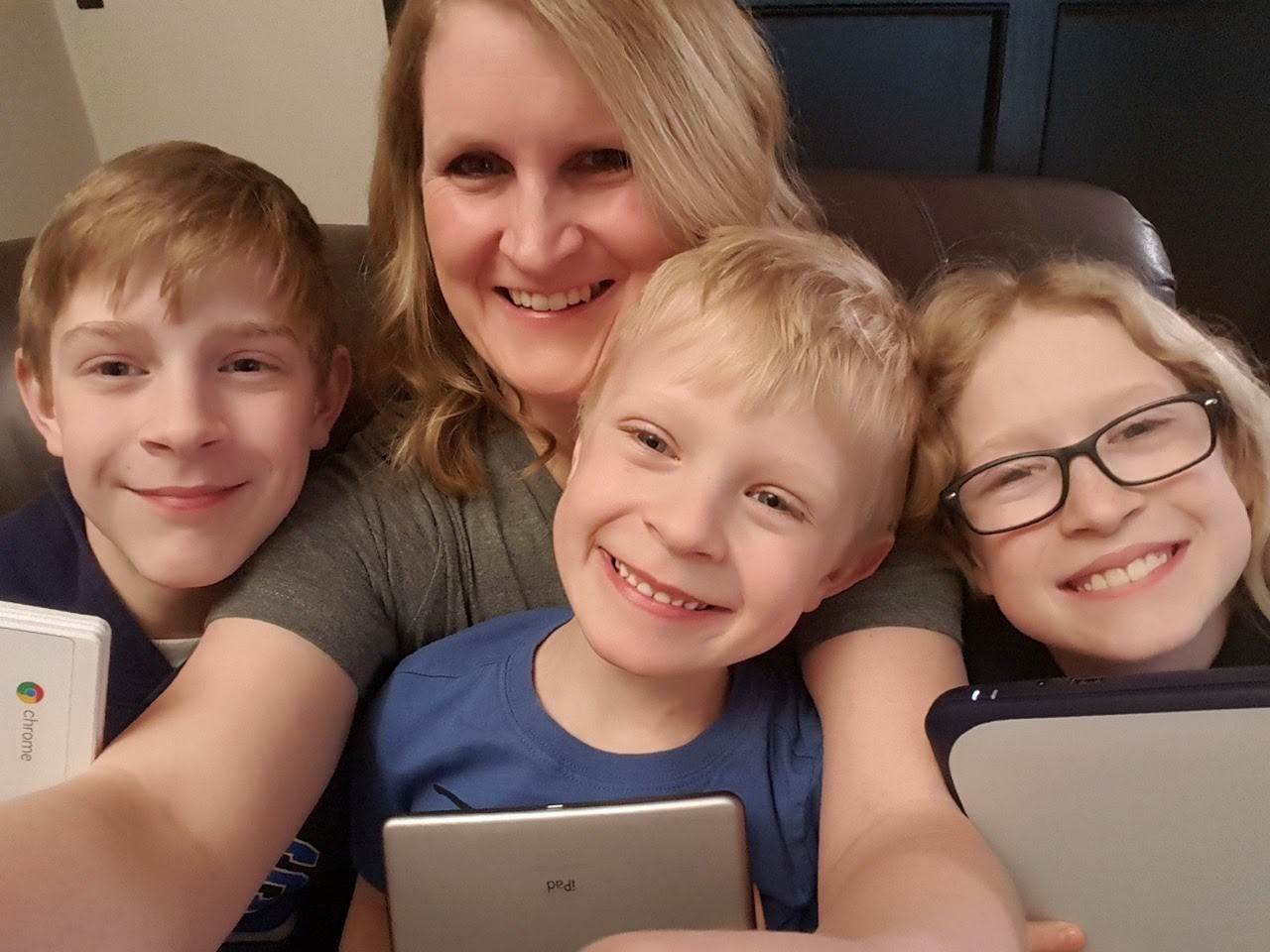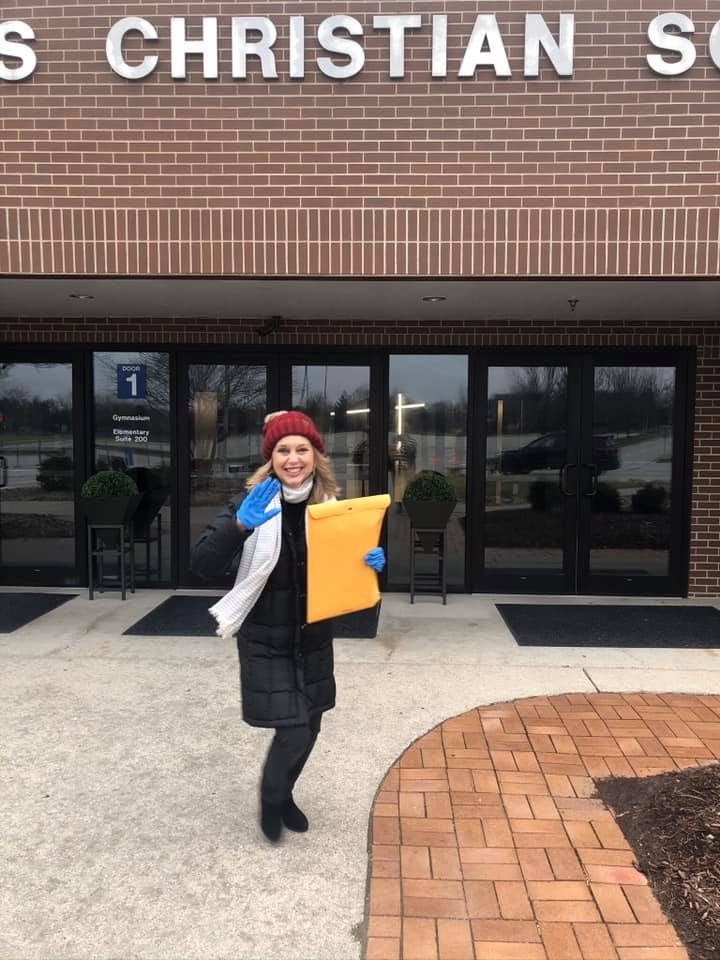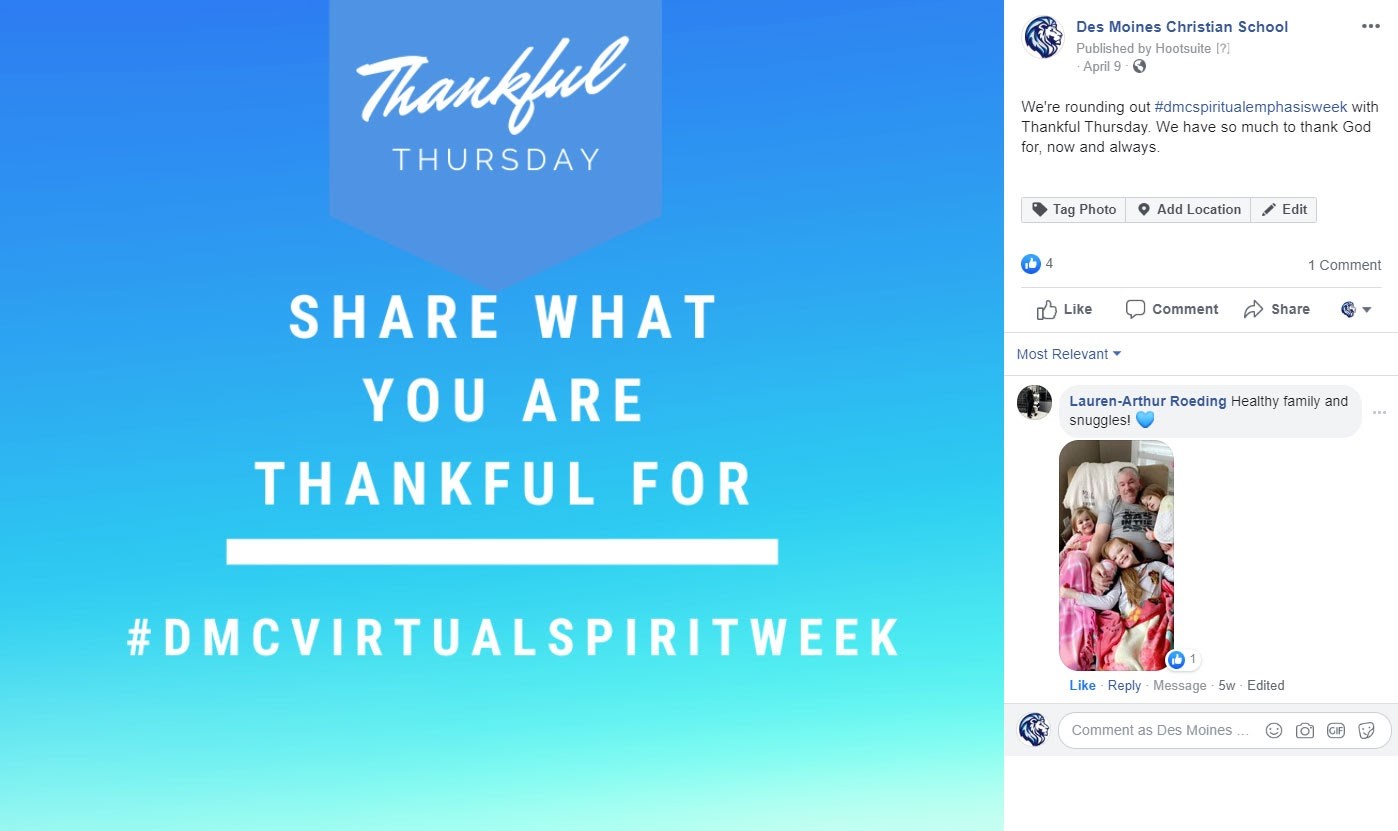Together During Distance Learning

Greek philosopher Plato said, “necessity is the mother of invention.” How true that is today!
Des Moines Christian School, like all schools across Greater Des Moines (DSM) and the state, found itself heading into spring break with students and staff knowing we may not be returning to campus. Because of this, we wanted to find a way to provide meaningful education, in a way we had never fully explored before, and we needed to do this very quickly.
There was no guide or rulebook. Here’s what we knew:
- We needed to provide the best educational options to our students and families.
- We would continue our mission of equipping minds and nurturing hearts to impact the world for Christ.
- We would hold ourselves to the same standards of accountability and excellence.
This unprecedented time also called for ensuring good mental health and well-being of teachers, students and families.
In a recent team meeting, one of our principals said if we had planned to pursue distance learning in normal circumstances, this would have taken us three years to develop and thousands of dollars in consultant fees. She is right! Instead, DMCS developed our plan in just a few weeks, with minimal financial investment, knowing we would evaluate and make changes along the way.
Distance Learning Framework
- Provide mission excellence by transitioning curriculum and instruction to an online format
- Provide resources, content and direct support for our students’ spiritual and emotional needs
- Provide a daily structure and routine for students and families dealing with the crisis
- Provide evidence of learning results for students and families

Distance Learning for Students of All Ages
Each principal prepared an age-appropriate distance learning framework and a professional development plan for faculty and staff for potential implementation after spring break. Continued analysis over spring break led leaders to create asynchronous schedules conducive to working and learning at home for both students and parents. Ultimately, the decision was made to run early education through eighth grade classes in the morning and grades 9-12 in the afternoon.

Students took home all of their learning materials over spring break as a precaution. These proactive measures made it possible to begin distance learning the week after spring break without missing a single instructional day. After spring break, we handed out more than 100 student learning devices curbside and coordinated a curbside supply pickup with any items that had been left behind before break.
Not Business as Usual
Faculty employed a variety of strategies to ensure students were making progress on academic standards. We had to get creative, so we:
- Modified assessments such as oral testing or recorded videos
- Began reteaching of learning objectives
- Established virtual small group tutoring sessions
- Adjusted activities conducive to at-home learning, including music and physical education, as well as an Elementary STEAM Day.
- Utilized online tools such as EdPuzzle, SeeSaw, Kahoot and Socrative
- Found a lot of ways to use items around the house for learning
Activities ranged from students making geometric shapes using paper from home and creating color wheels for art class using items from around the house. Second grade students created a STEAM activity called, "Trash to Treasure!” and found ways to reuse items at home that would otherwise be thrown away or recycled.
In our second week of distance learning, leaders conducted student, parent and faculty surveys to assess distance learning. Results were analyzed by faculty who adjusted procedures to enhance the learning experience for students.
Monitoring Mental Health
Our mission is more important now than ever; we need to connect with our students and provide support for families in a time such as this. To the extent possible, leaders established a framework of support for students and families, faculty and staff. This included the following:

- Daily devotional videos and family devotionals
- A daily bedtime story for Elementary students titled A Lion’s Tale.
- K-12 school counselors checking in with students who are struggling during distance learning, academically and socially/emotionally
- K-12 leaders ensuring student activities continue to keep students connected to peers. Examples include theme days like crazy sock day and Wacky Wednesday, High School student-led worship and lunch clubs.
- Psychologist Dr. Heidi Vermeer-Quist at Heartland Christian Counseling created videos equipping teachers with coping skills to care for themselves, as well as guide students and families during this time
A Little Fun

We have done our best to push through the barrier of the screen to connect authentically and plan fun ways to interact. We partnered with a DMC alum to write letters of encouragement for those in nursing homes and first responders.
Here are a few of the fun ways we’ve connected:

- Virtual pet show-and-tell
- Off-site parades to say hello to teachers
- Highlighting seniors on social media
- Dressing up as superheroes to recognize first responders
You can count on The Partnership to continue to share accurate and fact-based updates as well. See more on COVID-19 here.
Cade Lambert
Cade Lambert is entering his fifth year as superintendent at Des Moines Christian School (DMCS). Prior to that, he worked as an elementary principal at DMCS, head of New Life Academy of Woodbury in MN and as a teacher at Urbandale Middle School and Perry Elementary School in Iowa.